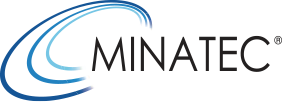ECO-Neuron : Efficacité Energétique et Fiabilité des Systèmes Neuromorphiques
Publié le : 29 octobre 2025

ECO-Neuron : Efficacité Energétique et Fiabilité des Systèmes Neuromorphiques
Context:
The fusion of Artificial Intelligence (AI) and IoT devices has enabled the development of context-aware systems, enhancing the potential of these devices to perform real-time processing, communication, and decision-making. As IoT networks expand, however, they face critical challenges related to data transmission bottlenecks, reliability, energy consumption, and computational complexity. A prominent solution is the development of electromagnetic field sensing (EFS) technologies within IoT networks, which could unveil novel communication schemes. Thus, neuromorphic circuitry could be used to detect and distinguish wideband RF signals for purposes such as environment positioning and network identification.
The implementation of Spiking Neural Networks (SNNs) is often performed on neuromorphic processors such as Truenorth, SpiNNaker, and Loihi. These solutions fully exploit the sparsity of events and offer remarkable computational efficiency. Until now, power consumption is still between milli and microWatts for digital solutions, while analog ones achieve nanoWatts (Shrestha, 2022). Recent literature has validated a library of electronic neurons using bio-inspired models known as neuromorphic circuits (Rioufol, 2023). Moreover, RF neuromorphic sensor and signal processing (Jouni, 2025) (Ferreira, 2025) were proposed. Results have presented the best energy consumption per synaptic operation (i.e., Eeff in fJ/SOP) and a competitive area trade-off. The use of memristive synapses offers significant advances in terms of non-volatility, on-line learning (Daddinounou and Vatajelu, 2024), and energy efficiency (Khuu, 2023), compared to conventional digital processing units. Besides, memristor devices are aligned with the requirements of context-aware SNN learning algorithms, and suitable for neuromorphic circuits interconnections (Daddinounou, 2024). Therefore, building fault-tolerant and energy-efficient edge AI solutions for IoT devices is a challenge in the state-of-the-art.
Objective:
ECO-Neuron focuses on developing neuromorphic system based on SNNs and memristive devices, bringing low-power, real-time processing directly to reliable edge AI solutions for IoT networks. Key objectives include creating energy-efficient systems with on-line learning capabilities, ensuring fault tolerance, and improving device security. By integrating EFS into neuromorphic systems, the project will propose a solution to enhance context-aware reliable communications in IoT.
Keywords:
energy efficiency, reliability, neuromorphic circuits, memristors, IoT.
Project Supervision:
CROMA laboratory is represented by Pietro M. FERREIRA, Full Professor at Université de Savoie Mont Blanc. His research interests are design methodologies and microwave instrumentation techniques for ultra-low power integrated circuits in harsh environments. Recent projects aim the Internet of Things industry considering IA edge and reliability. TIMA laboratory is represented by Ioana VATAJELU, CRCN CNRS. Her research interests are on design and design-for-dependability of beyond-CMOS neuromorphic circuits.
Candidate will be formed according to the criteria of “Initiation à la Recherche” program, but also through personalized guidance specific to the tools and scientific methods of the research topic. Practical activities and real-world scenarios are planned, including scientific writing, communication and public speaking, result quality, time management, and research project management.
Candidate Profile:
The candidate profile required for the project is a young professional pursing a master’s degree in Eletrical or Electronics Engineering, interested in the scientific field of embedded electronics, microwave, and AI. He/She must be motivated, passionate about research in a multidisciplinary field and an organized person using scientific methods. He/She must justify good academic tracks in maths and applied physics; an experience in design flow; linguistic competence in English (B2 written and spoken); linguistic competence in French is a plus.
Intellectual Property:
Being fundamental scientific research, this subject is not attached to any industrial project. Intellectual property will be promoted through scientific communications favoring the open science policy of the French government.
Bibliography:
Jouni et al. (2025)10.1109/TCASAI.2025.3571021;
Ferreira et al. (2025) 10.1109/MDAT.2025.3547974;
Daddinounou and Vatajelu (2024) 10.3389/fnins.2024.1387339;
Daddinounou et al. (2024) 10.1109/ACCESS.2024.3411519;
Rioufol (2023)10.1109/SBCCI60457.2023.10261961;
Khuu (2023) 10.1088/1361-6463/ad1016;
(Shrestha, 2022) 10.1109/MCAS.2022.3166331;




 Contactez-nous
Contactez-nous Plan d’accès
Plan d’accès









